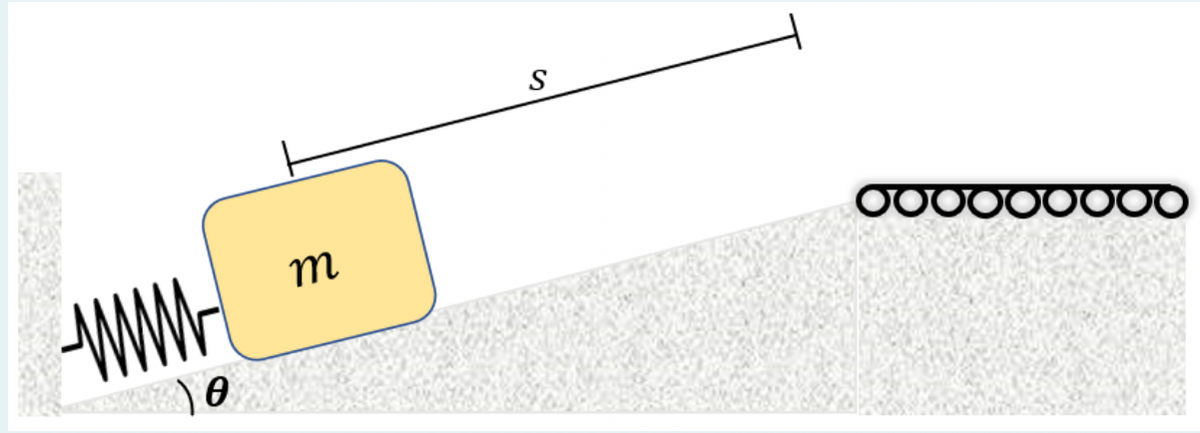Represents the initial and final states of the system, identifying an upward y+ axis for the block. Modelization Creates a model for the block's final speed in m/s (at the top of the ramp), given the known parameters only. Then test your model with the following values: Block mass: 5.1 kg Ramp tilt angle: 16.1 degrees Distance travelled by the block: 1.8 m Kinetic coefficient of friction: 0.19 Spring constant (k): 1095 N/m Initial spring compression: 0.5 m
A spring lift (II)
context
You are still working on your prototype spring lift. A block is placed at the end of a compressed spring (without being attached to it). The mechanism is triggered, which propels the block up the ramp, towards a roller conveyor. Now you want to calibrate the speed of your lift, to decide what kind of spring to use.
Information
The mass of the block is known.
The block is initially at rest.
The angle of inclination of the ramp is known.
The distance travelled by the block is known.
There is friction between the block and the ramp: the kinetic coefficient of friction is known.
The spring constant is known.
The initial compression of the spring is known.
Schematization
Represents the initial and final states of the system, identifying an upward y+ axis for the block.
Modelization
Creates a model for the block's final speed in m/s (at the top of the ramp), given the known parameters only.
Then test your model with the following values:
Block mass: 5.1 kg
Ramp tilt angle: 16.1 degrees
Distance travelled by the block: 1.8 m
Kinetic coefficient of friction: 0.19
Spring constant (k): 1095 N/m
Initial spring compression: 0.5 m

Step by step
Solved in 2 steps with 1 images
